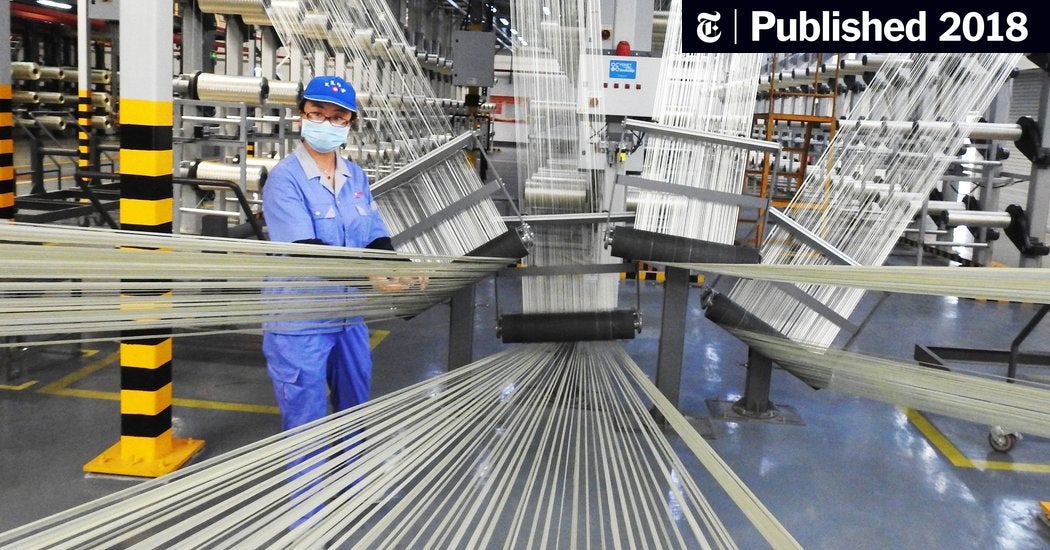Analyzing The Economic Fallout Of Trump's Policies

Table of Contents
The Impact of Trump's Tax Cuts and Jobs Act of 2017
The Tax Cuts and Jobs Act of 2017, a cornerstone of Trump's economic agenda, significantly lowered corporate and individual income tax rates.
Short-term economic stimulus vs. long-term debt increase
- Increased National Debt: The tax cuts resulted in a substantial increase in the national debt, fueling concerns about long-term economic stability. The reduction in government revenue was not offset by corresponding economic growth, leading to a widening budget deficit.
- Effects on Corporate Profits: While corporations saw a boost in profits due to lower tax rates, the extent to which these profits translated into increased investment and job creation remains a subject of debate. Many corporations used the tax savings for stock buybacks rather than investments.
- Wealth Inequality: Critics argued that the tax cuts disproportionately benefited high-income earners and corporations, exacerbating wealth inequality. The distribution of tax benefits was skewed towards the wealthy, further widening the gap between the rich and the poor.
Effects on investment and job creation
- Job Growth Numbers: While job growth was positive during parts of the Trump administration, it's difficult to definitively attribute this solely to the tax cuts. Other factors, such as global economic conditions, also played a significant role.
- Investment in Infrastructure: Despite campaign promises, significant investment in infrastructure did not materialize. This lack of investment hindered long-term economic growth potential.
- Impact on Specific Sectors: The manufacturing sector experienced some growth, but this was often attributed to global factors rather than the direct impact of the tax cuts.
Trade Wars and Their Economic Consequences
Trump's administration initiated several trade wars, imposing tariffs on goods from various countries.
The impact of tariffs on consumer prices and businesses
- Impact on Specific Industries: Industries like agriculture and steel faced significant challenges due to retaliatory tariffs imposed by other nations. Farmers, in particular, suffered from reduced exports and market instability.
- Increased Prices for Consumers: Tariffs led to increased prices for consumers on a range of goods, contributing to inflation. This reduced consumer purchasing power and negatively impacted economic growth.
- Trade Deficits: Despite the tariffs, the US trade deficit remained largely unchanged, indicating that the trade wars did not achieve their stated goal of reducing the trade imbalance.
Retaliatory tariffs and their effects on global trade
- Global Response to Trump's Trade Policies: Trump's protectionist policies led to retaliatory tariffs from other countries, disrupting global trade relationships and harming global economic growth.
- Supply Chain Disruptions: The trade wars caused significant disruptions to global supply chains, impacting businesses and consumers alike. Uncertainty and delays became commonplace.
- Damage to International Trade Relations: The trade wars damaged international trade relations, weakening the World Trade Organization (WTO) and undermining multilateral trade agreements.
Deregulation and its Economic Effects
The Trump administration pursued a policy of deregulation across various sectors.
Impact on environmental regulations and public health
- Rollback of Environmental Regulations: The administration rolled back numerous environmental regulations, leading to concerns about air and water quality, and exacerbating climate change.
- Consequences for Air and Water Quality: The weakening of environmental standards resulted in increased pollution levels, potentially leading to increased public health costs.
- Potential Public Health Costs: The long-term health consequences of environmental deregulation are likely to be significant, posing a substantial economic burden on society.
Effects on financial regulations and market stability
- Changes to Financial Regulations: The administration sought to weaken financial regulations, raising concerns about market stability and the potential for another financial crisis. Concerns arose about increased systemic risk.
- Impact on Market Stability: Reduced regulation increased the risk of market instability and potentially increased the vulnerability of the financial system to shocks.
- Potential Risks to the Financial System: Critics argued that the deregulation efforts undermined the protections put in place after the 2008 financial crisis, potentially increasing the risk of a future financial crisis.
The COVID-19 Pandemic and the Trump Administration's Economic Response
The COVID-19 pandemic presented a significant economic challenge to the Trump administration.
Initial economic response and its effectiveness
- Initial Stimulus Packages: The administration implemented several stimulus packages, including the Paycheck Protection Program (PPP), aimed at mitigating the economic fallout of the pandemic.
- Impact on Unemployment: While the stimulus packages helped to reduce unemployment, the economic damage from the pandemic was substantial, leading to millions of job losses.
- Effectiveness of Government Support Programs: The effectiveness of the government support programs varied, with some programs being more successful than others in reaching those in need.
Long-term economic consequences of the pandemic response
- Long-term Economic Consequences: The pandemic and the economic response led to a substantial increase in the national debt, and long-term effects on unemployment and consumer behavior are still unfolding.
- Increased National Debt: The cost of the stimulus packages significantly increased the national debt, adding to the long-term fiscal challenges facing the United States.
- Changes in Consumer Behavior: The pandemic led to significant changes in consumer behavior, with increased online shopping and reduced spending in certain sectors.
Conclusion: Assessing the Legacy of Trump's Economic Policies
Analyzing the economic fallout of Trump's presidency reveals a complex picture. While the tax cuts provided a short-term economic stimulus, they also significantly increased the national debt and exacerbated wealth inequality. The trade wars disrupted global trade, harming businesses and consumers. Deregulation efforts raised concerns about environmental protection and market stability. The response to the COVID-19 pandemic, while providing some relief, further increased the national debt and left lasting economic consequences. To gain a deeper understanding of the complex economic legacy of the Trump administration, further research into specific policy areas is encouraged. Continue exploring the lasting impacts of Trump's economic policies by [link to relevant resource].

Featured Posts
-
 Analyzing Chinas Economic Exposure To Increased Tariffs
Apr 22, 2025
Analyzing Chinas Economic Exposure To Increased Tariffs
Apr 22, 2025 -
 Anti Trump Protests Hear The Voices From Across America
Apr 22, 2025
Anti Trump Protests Hear The Voices From Across America
Apr 22, 2025 -
 Pope Franciss Papacy A Defining Conclave
Apr 22, 2025
Pope Franciss Papacy A Defining Conclave
Apr 22, 2025 -
 Harvard And The Trump Administration A 1 Billion Funding Dispute
Apr 22, 2025
Harvard And The Trump Administration A 1 Billion Funding Dispute
Apr 22, 2025 -
 Saudi Aramco And Byd A New Ev Technology Partnership
Apr 22, 2025
Saudi Aramco And Byd A New Ev Technology Partnership
Apr 22, 2025
